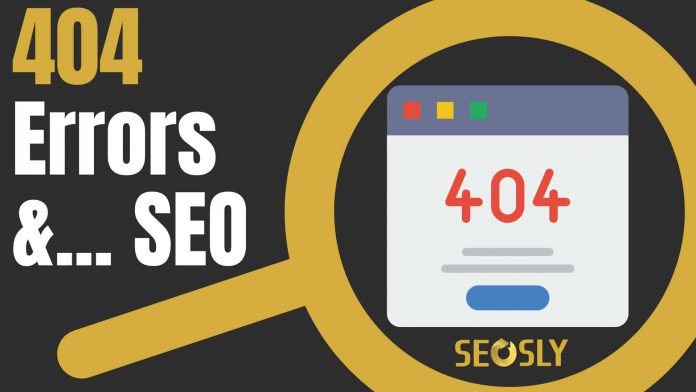Welcome to our latest blog post where we’ll be exploring the importance of resolving 404 errors for SEO success. Are you tired of seeing your website’s rankings suffer due to pesky error messages? If so, join us as we delve into how these seemingly minor errors can have a significant impact on your search engine optimization efforts. From identifying the root cause to implementing effective solutions, this article is packed full of valuable tips that every website owner should know. So don’t miss out – let’s get started!
What is a 404 Error?
When your website visitors encounter a 404 error, it means that the page they are looking for cannot be found. This can be frustrating for users, as they are unable to access the content they were hoping to find. In addition to being frustrating for users, 404 errors can also have a negative impact on your website’s SEO. Google and other search engines will index your website’s pages, and if they encounter a 404 error, they may penalize your website in their search results. This is why it’s important to resolve any 404 errors on your website as soon as possible. There are a few different ways you can do this, including redirecting users to the correct page or displaying a custom 404 error page. Whichever method you choose, make sure that you notify Google of the change so that they can properly index your website.
How do 404 Errors Impact SEO?
When a user attempts to visit a web page that does not exist, they are met with a 404 error message. If you run a website, it’s important to make sure that all of your links are working and that users don’t encounter any 404 errors. Not only is it bad for the user experience, but 404 errors can also negatively impact your SEO.
When Google crawls your website and encounters a 404 error, it will mark the page as being unavailable. This signals to Google that the content on that page is no longer relevant, which can hurt your website’s ranking in search results. In addition, if other websites have links pointing to the broken page on your site, those links will now be considered dead links. Having too many dead links on your website can also damage your SEO.
The best way to avoid having 404 errors impact your SEO is to make sure that all of your website’s links are working properly. You can do this by regularly checking your website for broken links and fixing them as soon as you find them. You can also use redirects to point users to the correct pages if they do happen to encounter a broken link. By taking these measures, you can help ensure that your website has a strong SEO foundation.
How to Find and Fix 404 Errors?
It’s important to note that 404 errors can occur for a variety of reasons. The most common reason is that a page has been moved or deleted. However, 404 errors can also occur if there’s a typo in the URL or if the page never existed in the first place.
If you’re seeing 404 errors on your website, there are a few different ways you can go about resolving them. First, you can check to see if the page has been moved or deleted. If it has, you’ll need to update your internal links to point to the new location. If the page doesn’t exist anymore, you may need to 301 redirect traffic from the old URL to a new one.
Another way to resolve 404 errors is to look for any broken links on your website and fix them. This can be done using a tool like Google Webmaster Tools. Once you’ve found and fixed any broken links, make sure to update your sitemap so that Google knows where your pages are located.
If you’re still seeing404 errors after taking these steps, it’s possible that there’s an issue with your server or DNS configuration. If this is the case, you’ll need to reach out to your hosting provider for help resolving the issue.
Benefits of Resolving 404 Errors
It is important to resolve 404 errors for a number of reasons. First, they can be frustrating for users who encounter them while trying to access your website. This can lead to a loss of traffic and potential customers. Second, search engines may penalize your website if they find 404 errors on it. This can result in a lower ranking in search results, which can also lead to a loss of traffic and potential customers. Third, unresolved 404 errors can create issues with your website’s sitemap and negatively impact your website’s indexation. Unresolved 404 errors can waste server resources, resulting in increased hosting costs.
Analyzing the Impact of 404 Errors Using Google Analytics
When it comes to website success, paying attention to and resolving errors is critical. Not only do 404 errors frustrate website visitors, they also have a negative impact on search engine optimization (SEO). In fact, resolving 404 errors is one of the most important technical SEO issues that website owners and administrators need to be aware of.
While there are many different types of errors that can occur on a website, 404 errors are by far the most common. A 404 error occurs when a user tries to access a page that doesn’t exist on your website. This can happen for a number of reasons, but the most common reason is that a user has typed in the wrong URL or clicked on a broken link.
While 404 errors may seem like a minor issue, they can actually have a major impact on your website’s SEO. When search engines crawl your website and encounter 404 errors, they will mark your website as being ‘broken’ and this will negatively affect your SEO efforts. Additionally, when users encounter 404 errors while trying to access your website, they are likely to leave immediately and this will also result in a high bounce rate – another key metric that search engines take into account when ranking websites.
Fortunately, there are some simple steps you can take to reduce the impact of 404 errors on your website’s SEO. The first step is to set up Google Analytics so that you can track and monitor your 404 errors. Once you have Google Analytics set up, you’ll be able
Alternatives to Resolving 404 Errors
There are a few alternatives to resolving 404 errors that can be beneficial for SEO purposes. One option is to 301 redirect the old URL to the new one. This is useful if the content has been moved to a new location and you want to keep any inbound links and associated SEO benefits. Another option is to use a 410 code, which tells search engines that the page is permanently gone and should no longer be indexed. However, this should only be used if the page truly doesn’t exist anymore and isn’t just temporary unavailable. You can also simply ignore the 404 error, especially if it’s not impacting user experience or causing any other issues.
Conclusion
Resolving 404 errors is a crucial step in optimizing your website for search engine success. Not only does it ensure that your visitors have the best experience possible on your site, but also helps to avoid potential penalties from Google or other search engines. Taking the time to properly identify and fix any 404 error issues on your website will help you create an effective SEO strategy and improve traffic conversion rates over time. With these benefits outlined, there’s no reason not to take action today!



